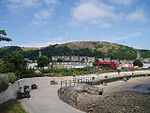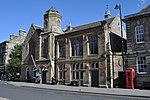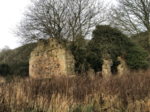Battle of Kinghorn
The Battle of Kinghorn was fought on 6 August 1332 at Wester Kinghorn (now Burntisland), Fife, Scotland. An invading seaborne force of 1,500 men was commanded by Edward Balliol and Henry Beaumont, Earl of Buchan. A Scottish army, possibly 4,000 strong, commanded by Duncan, Earl of Fife, and Robert Bruce, Lord of Liddesdale (an illegitimate son of King Robert the Bruce) was defeated with heavy loss. Balliol was the son of King John Balliol and was attempting to make good his claim to be the rightful king of Scotland. He hoped that many of the Scots would desert to him. Balliol and Beaumont's forces were still disembarking from their ships when the Scots attacked them. The Scots pressed hard, but were beaten off by English longbowmen and some supporting infantry even before Balliol's men-at-arms could get ashore. The Scottish losses are disputed, but included several nobles. The invaders fought the main Scottish army five days later at the Battle of Dupplin Moor and inflicted a crushing defeat. Balliol was crowned king of Scotland on 24 September.
Excerpt from the Wikipedia article Battle of Kinghorn (License: CC BY-SA 3.0, Authors).Battle of Kinghorn
High Street,
Geographical coordinates (GPS) Address Nearby Places Show on map
Geographical coordinates (GPS)
| Latitude | Longitude |
|---|---|
| N 56.06 ° | E -3.231 ° |
Address
On A Roll
High Street 263
KY3 9AQ
Scotland, United Kingdom
Open on Google Maps










